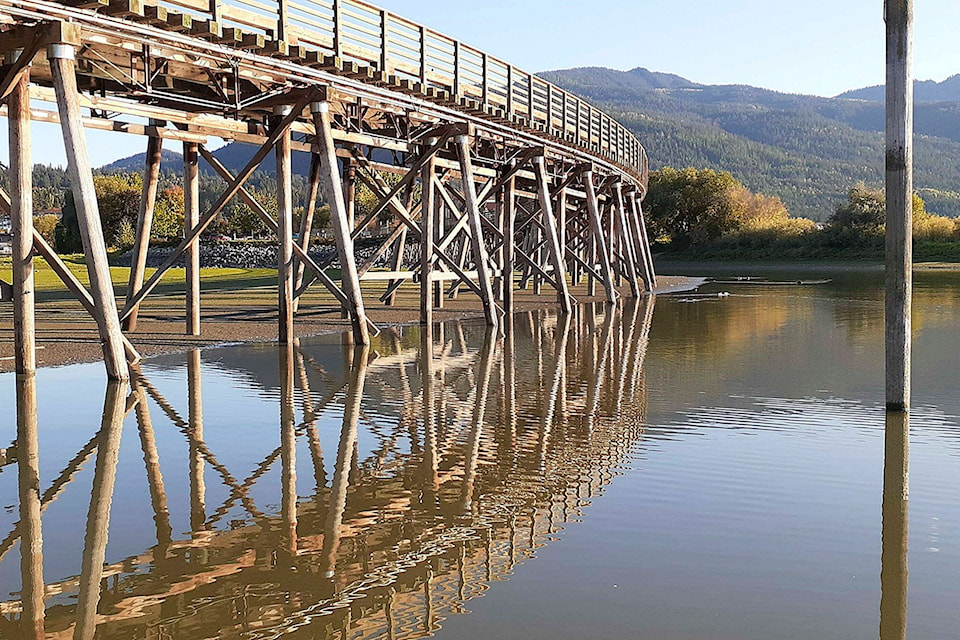Phosphorus is the focus of an action plan being devised to help protect the Shuswap watershed.
The Shuswap Watershed Council (SWC) has released its Water Quality Report for 2021. In it, the SWC shares results of water quality testing in numerous locations in the watershed. In addition, the report covers a range of related topics, from an update on invasive mussels to algae and blooms, to the impact wildfires have on a watershed.
“Once again the beach monitoring program overseen by Interior Health and First Nations Health Authority had really good results,” explained SWC program manager Erin Vieira in a media release accompanying the report. “Out of 193 water quality samples collected from 10 beaches in 2021, 190 had acceptable results.”
Water quality testing is conducted at 16 locations in the watershed including Adams Lake, the Shuswap River, Mabel and Mara lakes, and several spots around Shuswap Lake. The report notes that overall, water quality is good in most locations at most times of the year. However, testing over the years has shown that one of the main threats to water quality are nutrient loads, particularly phosphorus which is coming primarily from the Shuswap and Salmon rivers.
The report explains phosphorus and nitrogen are important in a health ecosystem where the “give-and-take of nutrients is balanced.” However, too many nutrients in an aquatic system can upset the balance and lead to “excessive algae growth (an ‘algal bloom’), odours, reduced water clarity, and it can compromise the quality of water for drinking and recreation.”
Read more: Algae bloom highlights nutrient concerns in Shuswap water quality report
Read more: Column: Shuswap Lake water quality concerns prompt action by Ministry of Environment
A graph included in the report shows that for Shuswap and Mara lakes in 2021, the largest concentration of reactive phosphorus (the form that has the potential to trigger an algal bloom), was found in Tappen, followed by two testing points in Mara Lake, and at Canoe Point. The SWC worked with UBC-Okanagan to understand and find ways to mitigate this risk. In 2020, the SWC launched its Water Quality Grant program, offering funds to assist agricultural producers and other land stewards to retain nutrients on land and in soil, and prevent nutrients from washing off into nearby creeks and rivers through rain, snowmelt or flooding where it could contribute to water quality degradation.
The SWC is also working on a Phosphorus Action Plan for the watershed. The plan is intended to provide guidance on actions that can be taken to reduce phosphorus loading into water bodies. The report says the plan will summarize phosphorus regulations and identify “new, innovative and strategic solutions for phosphorus management.”
Regarding invasive zebra and quagga mussels, the report highlights that neither exist in the Shuswap, or in any B.C. lakes. But they have been found in Ontario and Manitoba and as far as West California, and the SWC stresses preventative steps need to be taken to keep them out of B.C.
Small populations of invasive clams have been found in Shuswap Lake near Sunnybrae and Canoe. The report says they are very difficult to eradicate.
“The threat of invasive mussels continues,” said Vieira. “Watercraft owners must always clean, drain and dry their watercraft when they move it out of a lake or river. If you’re going paddling at Gardom Lake today, and to Canoe Beach tomorrow, you need to clean, drain and dry in between.
“Additionally, anyone visiting or returning to B.C. from outside of the province with a watercraft needs to stop at watercraft inspection stations along their travel route.”
The report can be found on the SWC’s website, www.shuswapwater.ca.
lachlan@saobserver.net
Like us on Facebook and follow us on Twitter
Sign up for our newsletter to get Salmon Arm stories in your inbox every morning.
